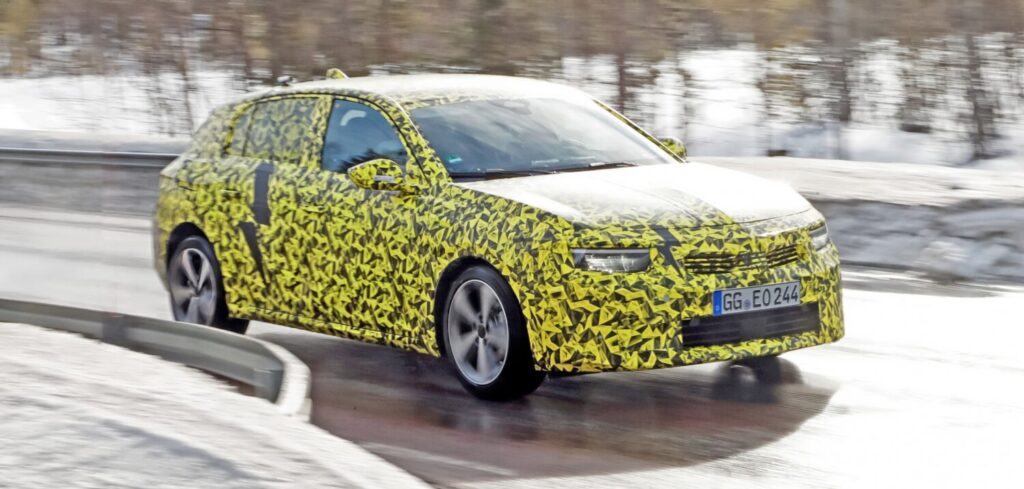Vauxhall says its new Astra is nearing the end of a rigorous test program that has seen the British manufacturer’s vehicle undergo development in the frozen arctic of Swedish Lapland, in addition to stringent laboratory tests on electronics and safety equipment at the company’s Dudenhofen Test Center, Germany.
“The demanding test program of the all-new Astra is going exceptionally well,” commented Astra chief engineer, Mariella Vogler. “The development team – which, by the way, comprises more female engineers than ever before – has created an uncompromisingly cool new generation of Astra that will thrill our customers.”
Over the winter, engineers traveled to Swedish Lapland to test the vehicle at temperatures below -30oC. A major objective for the latest hatchback was to always handle safely and consistently, so chassis experts at the testing ground optimized the electronically controlled systems for stability, traction and anti-lock braking following a series of laps on specially prepared slippery tracks.
“During development we made sure that the new-generation Astra will once again offer drivers and passengers a lot of driving fun and comfort,” said Vauxhall’s head of vehicle dynamics, Andreas Holl. “On the one hand, our sophisticated and dynamic design ensures that occupants will always feel safe, even at high speeds on the motorway; on the other, it offers plenty of comfort – even on poor road surfaces – for a relaxed driving experience.”
Alongside handling verification, HVAC (heating, ventilation and air-conditioning) engineers made sure the passenger compartment warmed up quickly. The rest of the team monitored the new Astra’s engine heat rejection, coolant flow, heater core performance and blower airflow. The heated steering wheel and the heating of the front and rear seats were also tested. Alongside this, and to meet Vauxhall’s safety requirements, frozen windows were tested to see how quickly the heating system could clear them.
The new Astra is available as a plug-in hybrid, so engineers also kept a close eye on the warm-up times of the lithium-ion battery, to ensure cell performance met the standards for electric driving in cold-weather scenarios.
At the Dudenhofen Test Center, engineers from the competence center for ADAS (automated driver assistance systems) in Rüsselsheim used the testing site’s high-speed oval and long straight to calibrate the vehicle’s advanced technologies. This included the adaptive cruise control, emergency braking, forward collision alert and rear cross-traffic assist.
Pre-production cars were utilized for these tests, carrying out high-speed driving above 128km/h and hard-braking tests to ensure the Astra stayed stable. NVH (noise, vibration and harshness) testing was also conducted to check that components like the hood and windshield wipers did not vibrate or make noise at such speeds.
Further validation included a 25cm water trough test to make sure the powertrain and electrical components were completely sealed and protected from water.
A test car was also subjected to interference testing in which various frequencies were aimed at special absorbers built inside the Astra to see if they could ‘soak up’ the transmission without reflecting them back into the vehicle’s electronic systems. The model passed this test and subsequently gained type approval.


